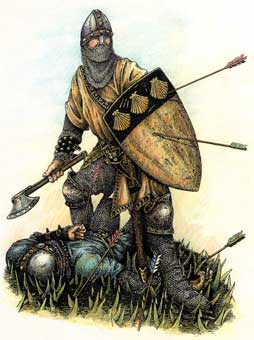IN THE FOOTSTEPS OF DAVID R. ROSS "FALKIRK" |
 |
This was the first time I had visited Falkirk, and shame on me. The town is steeped in Scotland's history. With my trusty copy of DESIRE LINES at the ready I set off to investigate. The Romans invaded Britain almost 2000 years ago the under the Emperor Claudius, but it was approximately 35 years later before they managed to penetrate Scotland, and they were never to conquer the Northerly areas of Britain. |
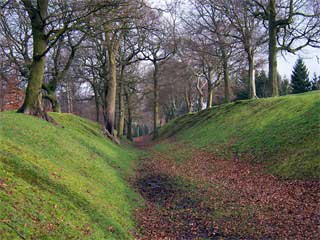 |
 |
A wee drive further on now and we reached the Town Centre, there are so many bits and pieces to see in Falkirk and there's lots of info available on the many historical walks in the area, I preferred to just have a wee wander by myself. First stop was Anne Summers shop, relax, calm down now, this shop is opposite the Tolbooth and above the shop is where Bonnie Prince Charlie made his headquarters after his victory at the second battle of Falkirk in 1746. Further down the High Street, you'll find the Cowgate Shopping Centre, this route was originally called, "Bantaskine Port" where Charlie and his army entered the town after their victory at Falkirk. If you go to the back of the mall to the escalators there are some fantastic stained glass windows which were rescued and restored from Bantaskine House, they really are quite something, only in Scotland would you find items for sale in front of treasures like these!!!! On then, back to the High Street. |
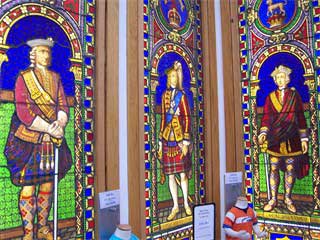 |
 |
Just down the street you'll find an old Churchyard with a huge Celtic Cross in memory to the men of Bute who fought and died for Wallace in 1298. |
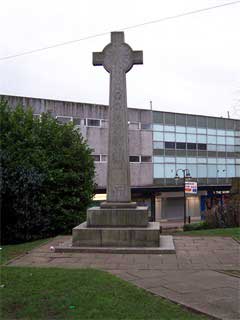 |
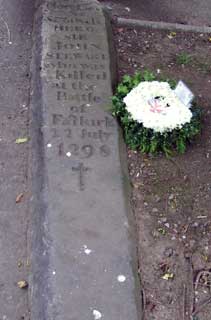 |
 |
Back to the car now, we head for the monument for the second battle of Falkirk, I won't bore you with the travel details but if you buy DESIRE LINES I guarantee you won't get lost. |
THE SECOND BATTLE OF FALKIRK 1746 |
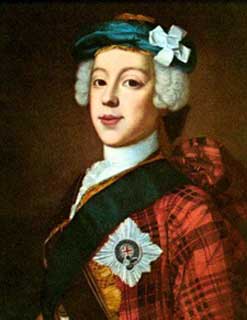 |
The battle fought on the south muir of the town on 17th January 1746 was the last Jacobite triumph on the battlefield and the last time the famous Highland charge swept the clansmen to victory. Bonnie Prince Charlie's attempt to march on London had ground to a halt in Derby and the subsequent retreat harried all the way by Government troops had demoralized and depleted his army. Arriving in the Falkirk area from Glasgow in the first days of 1746, the man in effective command of the Jacobites, Lord George Murray spotted a opportunity to deliver a counter blow against the pursuing Government forces. General Henry Hawley in command of nearly nine thousand men had made camp in Falkirk on land to the west of the town where Hope Street now runs down towards the present Dollar Park. The Jacobite commanders besieging Stirling Castle decided that a carefully planned attack might rout the redcoats and begin a revival in the fortunes of their luckless Prince. On the morning of January 17th aided by Sir Archibald Primrose of Dunipace - under duress, or so he claimed at his subsequent trial - the highland armies |
moved from Pleanin a southward circle across the rivers Carron and Bonny towards the south muir of Falkirk. It was a ferocious clash with the highlanders on the right wing-charging hard downhill towards their fleeing enemy. On the other side of the line the clansmen met much stiffer resistance and the ravine which separated then from the enemy prevented a straightforward charge. Many fled westwards away from the battlefield and thought they had lost. However, although confusion reigned for a time, the overall outcome was a near complete Jacobite victory. Government forces fled in disarray from the town, setting fire to their tents and abandoning great quantities of equipment. Later in the day three columns of highland soldiers entered through the town ports - Lord George Murray by Roberts Wynd, Lord John Drummond by the Cow Wynd and Cameron of Lochiel by the West Port. |
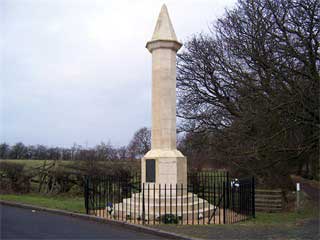 |
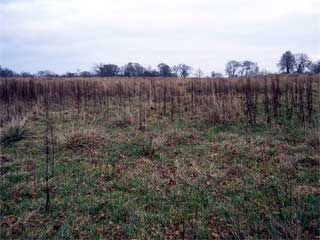 |
Casualties were high among the redcoats with between three and four hundred killed and many more taken prisoner. The Jacobite losses were less, some say as few as forty men. The site of the battle on the south muir is today marked by an obelisk unveiled by the Duke of Atholl in 1927. It is a modest memorial of such a great encounter and a more chilling reminder of the battle can be found in the many eye witness accounts of the battle which survive. Among the most graphic was that of Chevalier Johnstone who was sent with a sergeant and twenty men to guard the captured cannons on the battlefield: |
The sergeant carried a lantern; but the light was
soon extinguished, and by that accident we
immediately lost our way, and wandered a long time at
the foot of the hill, among heaps of dead bodies,
which their whiteness rendered visible... To add to the disagreeableness of our situation from the horror of the scene, the wind and the rain were full in our faces. I even remarked a trembling and strong agitation in my horse, which constantly shook when it was forced to put its feet on the heaps of dead bodies and to climb over them.....on my return to Falkirk I felt myself relieved from an oppressive burden: but the horrid spectacle I had witnessed was for a long time, fresh in my mind. |
| Only once more would British soil witness such carnage and that just three months later on Drumossie Moor at Culloden. On that day Lord Kilmarnock was taken, as the Jacobite cause perished. In August he was beheaded on Towerhill in London. |
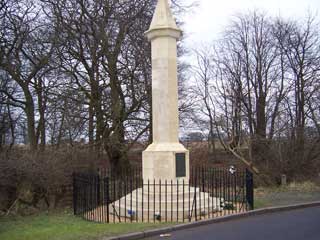 |
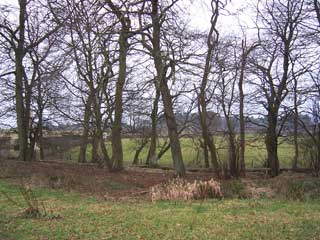 |
But what of the first battle of Falkirk in 1298 I hear you cry, well there's arguments about where exactly the site is. There is a long tradition in the district that the battle was fought in and around the Grahamston area, perhaps a mile north of the town centre. Certainly our Victorian ancestors were quite happy to accept this version, hence they gave local streets names like Campfield, Wallace, Bute and Stewart and marked the maps accordingly. |
THE FIRST BATTLE OF FALKIRK 1298 |
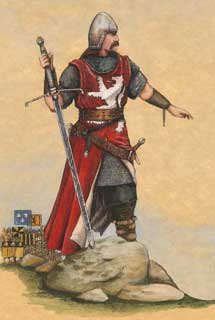 |
In the early summer of 1298, King Edward I of England, the redoubtable 'Hammer of the Scots', assembled a huge army and crossed into Scotland. His express aim was to avenge the defeat at Stirling Bridge the previous September and to restore English control north of the border. By the early days of July they had reached Linlithgow and though seriously short of supplies, and racked by internal dissent they advanced towards Falkirk on hearing that Wallace's army was nearby. Records show that in Edward's pay that day there were over 14,000 soldiers and, along with one hundred and eleven noble families with all their retinues of foot and horse, made up a huge force, perhaps 15 to 20 thousand strong which faced a smaller number of Scots, possibly 12,000 in what must have been one of the biggest land battles ever fought on British soil. On 22nd July 1298 the two armies came face to face near Falkirk but where the clash took place remains something of a mystery. Over the years antiquaries and local historians using the few clues available have suggested a number of places but without agreement. |
Tradition, for what it is worth, places the centre of the battle in the area of the present Victoria Park and street names like Wallace and Campfield remind us of the connection. |
|
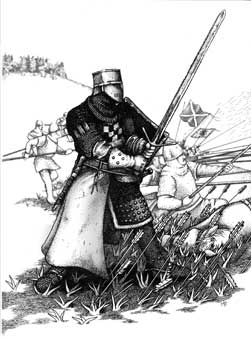 |
| Behind them on the high ground were the Scottish horse though their numbers were few. The English attacked repeatedly using knights on horseback to weaken the schiltroms but the Scots held. Though they failed to dislodge the Scots main defence it would appear that both the Scottish horse and archers encountered the charging knights and were destroyed in the early part of the encounter. At this critical stage Edward called up his archers, whose longbows would later win the honours at Agincourt and Crecy, but who were now put to the battle test for the first time. Wallace looked to his horsemen to scatter them but found that they were no longer there. We do not know if this was because of the action of the knights already described or for a more sinister reason. Certainly some some have suggested that many of the Scottish nobility were unhappy to be under the command of Wallace whom they though a man of lower rank and withdrew deliberately at an early stage. Whatever, the Scots were doomed. Great swathes were cut in the rings as wave after wave of arrows pierced the defence. And now the knights could do their worst on the open and dispirited Scottish ranks. The rout followed quickly and Wallace with many of his men fled north and east towards the Carron and the relative safety of the Torwood. Many hundreds, perhaps thousands, did not escape and they were finally buried in common pits near the field of battle as was the custom. They have never been found despite seven centuries of agricultural and industrial development. . |
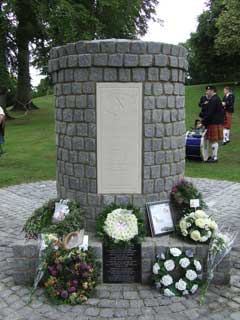 |
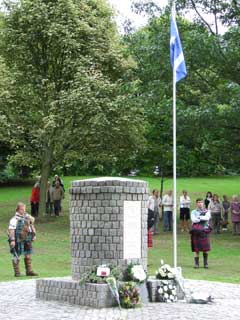 |
The Paisley Tartan Army would like to thank IAN SCOTT & FALKIRK LOCAL HISTORY SOCIETY for all their help with this project |
Artwork of Sir William Wallace, John DeGraeme & Sir John Stewart used with kind permission from artist Murray Robertson |
 |
© Paisley Tartan Army 2008-09

